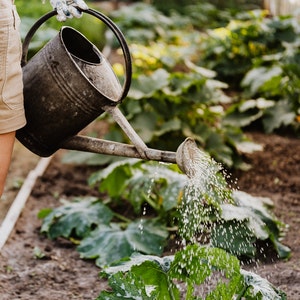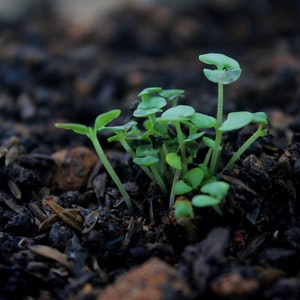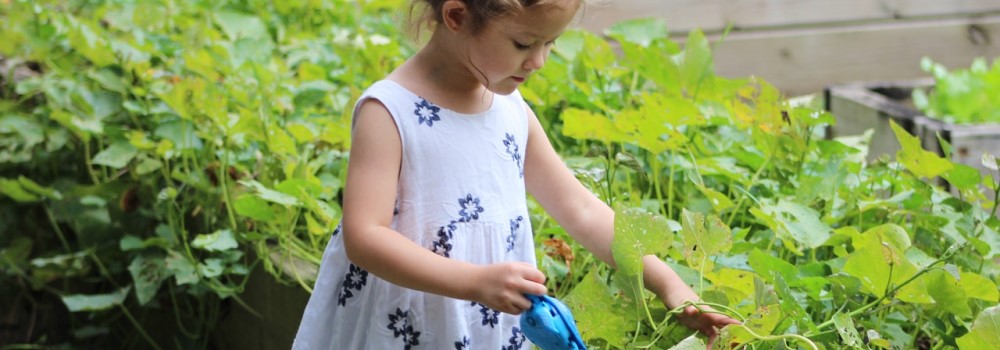Sustainability in gardening
Sustainability in gardening is achievable. As more people look for ways to care for the environment, they’re growing their own produce and using sustainable practices in their own homes. Based on organic farming, sustainable farming focuses on creating healthy soil, conserving resources, and overall bettering the environment. Gardening for good involves sustainability and caring about our planet.
1. Grow Your Own Produce
One of the most sustainable practices is growing your own produce. Fruits and vegetables from the store often come from hundreds of miles away. People often purchase foods that aren’t in season, and it takes a lot of fuel to transport them to grocery stores.
If you’re beginning to garden, you can always seek advice about growing your produce from other gardeners. Gardening is an essential part of a more eco-friendly and sustainable lifestyle.
We have guides to growing your own peppers, yellow tomatoes and garlic, among many others. Research which fruits and vegetables grow best in your local climate at different times of the year. Then, you can plan out which basics you can start with to supplement your grocery shopping and cooking as a a gardener.

2. Conserve Water
Water conservation requires you to use less water and use it only when necessary. Eco-friendly gardeners should be mindful to avoid wasteful practices like uncontrolled irrigation systems and overwatering. Overconsumption can lead to runoff and stress your plants’ root systems.
Sustainable gardening and lawn care use much less water. You can use barrels to collect and conserve rainwater that you can use to water vegetation. To save even more water, plant drought-resistant shrubs and perennials.

3. Compost Food Waste
Another sustainable gardening practice is to use your food waste as compost. Instead of throwing away vegetable and fruit scraps, add them to a compost bin. Compost acts as a natural fertilizer and adds a wealth of nutrients to your soil.
Many homes end up throwing out their food waste, which ends up in landfills that often have damaging effects on the environment. Composting is an easy fix for food waste, and it eliminates the need to purchase harmful fertilizers for your garden as well.
4. Use mulch in your garden
Mulching will help in your water conservation, and it maintains the soil’s fertility from your compost. Cover your garden plants with mulch made from biodegradable materials. Instead of purchasing inorganic matter for mulch, use wood chips, hay, or dried grass clippings.
Besides conserving water and adding nutrients to your soil, mulching will also help prevent erosion. You can cover both your garden and your lawn with mulch to reduce the number of weeds as well. One way of making your own mulch is to use leaves that you have natural access to in your garden.

5. Embrace Native Plants
Eco-conscious gardeners should plant native and climate-appropriate plants when they can. Native plants can withstand the conditions of your region better than any other plant. Species that are native to your area also require less maintenance, which gives you free time in your gardening.
Climate-appropriate plants are often beautiful and promote the biodiversity of your local environment. They are already used to your climate, soil, and rainfall. Plus, they provide food for insects and birds that can help pollinate your garden.
6. Change the Garden Layout
How can your garden do more good? Make sure it has a sustainable layout! Your garden design can conserve resources and be more environmentally friendly if you make a few changes. This can impact the health of your soil, the amount of food you grow and the amount of watering that’s needed.
The proper placement of plans can do a lot of good for your gardening. For example, make sure you place shade-loving plants in the shade of taller, sun-loving plants. This makes sure as many plants as possible thrive.
You can also add companion plants to increase your success with homegrown food. Companion plants help each other thrive by providing important soil nutrients and warding off pests. For example, tomatoes and basil are great friends because basil can repel harmful flies and supplement your yield.
7. Save Your Seeds
After the growing season, save the seeds of your annual flowers and plants. Store them in sealed containers and a dry place during the winter. By the following spring, you’ll be stocked with seeds to plant and won’t have to pay for as many seeds at a store.
Saving seeds requires some time and learning. Some easy seeds you can start with include peas, beans, tomatoes, squash, and peppers. As you get more comfortable with harvesting seeds, you can become an advanced seed saver and keep track of your inventory each year.
Gardening for the Good of the Planet
Sustainability and caring for the planet take practice, but in time, you’ll be able to find what works for you and your garden. The environment counts on people for continued care, and gardening sustainably is just one step you can take towards a healthier planet.

About the Author
Evelyn Long is a writer and editor based in Baltmore, Maryland. She is the editor-in-chief of Renovated and a dedicated container gardener in her city apartment.
Gardenize Plus
With Gardenize Plus you can:
- Use Gardenize on your laptop or desktop
- Download your data for free
- Create copies of your own plants
- Save as many photos you want
- Draw on photos
- Save as many inspirational posts as you want

More from Gardenize
Images published on the Gardenize website belong to Gardenize AB and may not be used without permission.



